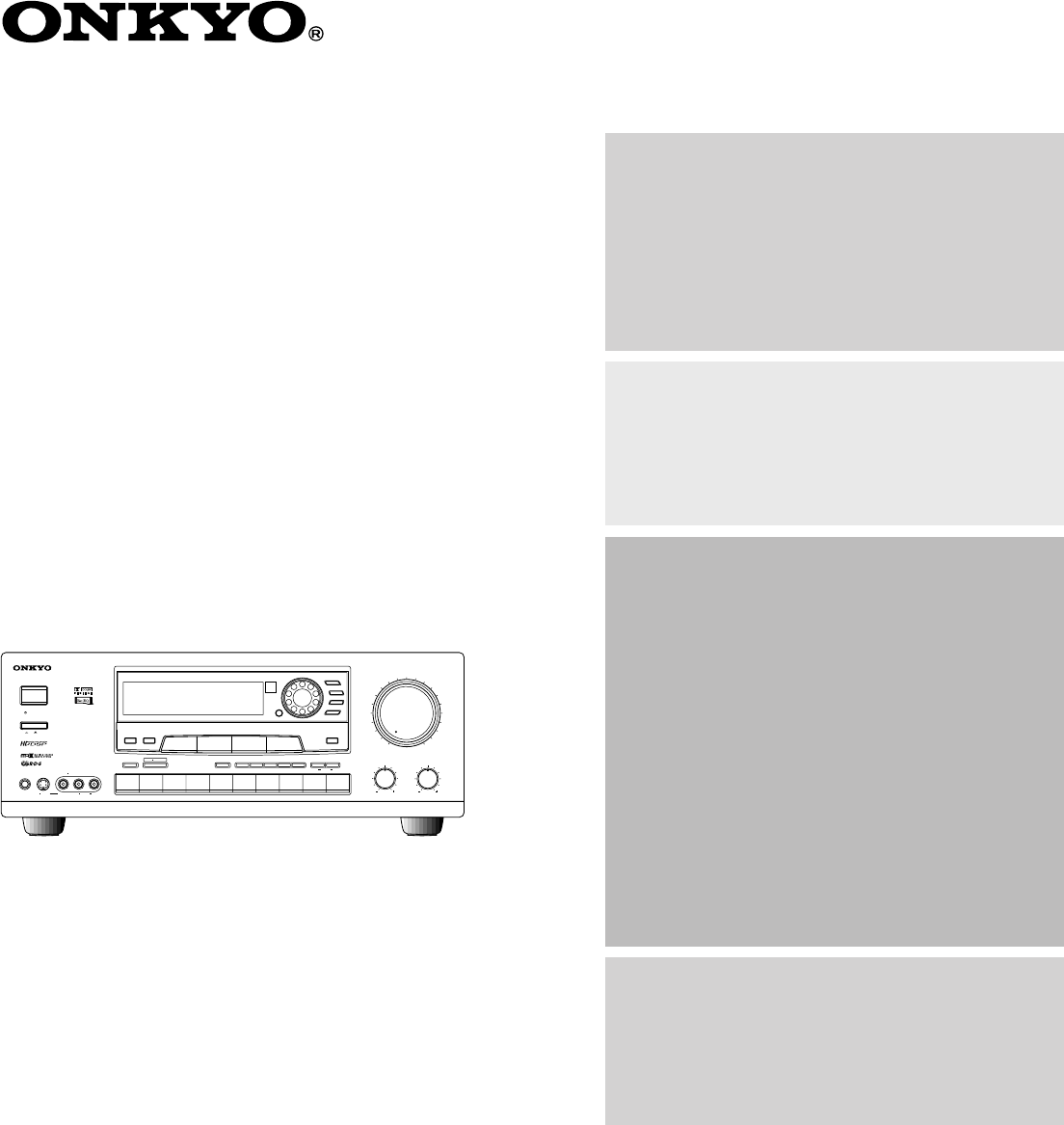
Thank you for purchasing the Onkyo Audio Video
Control Receiver.
Please read this manual thoroughly before making
connections and turning on the power.
Following the instructions in this manual will enable
you to obtain optimum performance and listening
enjoyment from your new Audio Video Control
Receiver.
Please retain this manual for future reference.
Instruction Manual
Audio Video Control Receiver
TX-DS656
Contents
Before using
Important Safeguards ........................... 2
Precautions ........................................... 3
Features ................................................ 4
Supplied accessories ............................ 4
Before using this unit ........................... 5
MASTER VOLUME
MAXMIN
TREBLE
SYSTEM
PHONES
DISPLAYPTY/TP
CHARACTER
SCAN GROUP MEMORY
FM MUTE
/
MODE
CLEAR
TI CH
INPUTMUL
VIDEO CAM INPUT/3VIDEO
VIDEO AUDIOLR
(
MONO
)
BASS
DIGITAL AUDIO
SELECTOR
S
VIDEO
STAND
-
BY
AUTO TUN
SMART SCAN CONTROLLER
ENTER
3
-
D BASS
MAIN REMOTE
SPEAKERS
PRESET
TUNING
SURROUND
PARAMETER
CDPHONOAMFM
TAPE
-
2
MONITOR
TAPE
-
1
M
D
VIDEO
-
3
CAM
VIDEO
-
2
VCR
-
2
/
TV
VIDEO
-
1
VCR
-
1
DVD
MIDNIGHT
THEATER
Re
-
EQ
MULTI SOURCE
REC OUT
AUDIO
VIDEO
CONTROL
RECEIVER
TX-DS
656
POWER
OFF
ON
Preparation
Connection ........................................... 6
On-screen setting ............................... 18
Speaker system setup ......................... 21
Operation
Input source selection and surround
setup ................................................. 25
Listening to FM/AM broadcasts ........ 32
Receiving RDS broadcasts
(European models only) ................... 36
Using the Surround modes................. 38
Recording from a source .................... 42
Using the TAPE-2 MONITOR
function ............................................ 44
Using the other remote controller functions
with the supplied remote controller ..... 45
Multi-room system connections......... 46
A few important notes
Troubleshooting ................................. 50
Specifications ..................................... 52
Control positions and names .............. 53


















